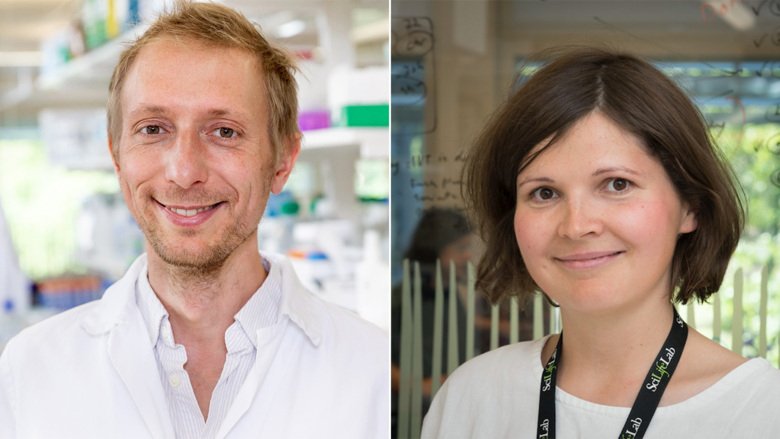Two KI researchers awarded ERC Consolidator Grants

Two KI researchers – Simon Elsässer and Magda Bienko – have been awarded 2022 European Research Council (ERC) Consolidator Grants totaling four million euro (nearly 45 million Swedish kronor). The funds will support two ambitious basic research projects that aim to further our understanding of the complex nature of our cells.
The consolidator grants represent one of four core grant schemes provided by the European Union’s research funding body, the ERC. It supports researchers with seven to twelve years’ experience after their PhDs and spans all disciplines of research from engineering to life sciences to humanities.
In this round, 321 researchers – out of 2,222 applicants – will receive a total of 657 million euro, on average 2 million euro per project provided for up to five years. The grants will create around 1,950 jobs for postdoctoral fellows, PhD students, and other staff at 21 host institutions across Europe, according to a news release from ERC. At KI, two projects were awarded this year.
How cells decide their fate
Principal investigator: Simon Elsässer, associate professor at the Department of Medical Biochemistry and Biophysics and Ming Wai Lau Centre fellow.
Project title: “ChromaDYN: Quantitative multimodal pulse-and-label time-resolved chromatin maps”
Summary: Simon Elsässer and his research group will use the funds to try to answer several important questions in embryonal development: how cells determine – and later remember – which fate to follow; how different cell identities are encoded; and how the right genes are turned on and off at the right time during development?
“I believe the answer to those questions lies in the way that our genetic information is packaged in the nucleus of each cell,” Simon Elsässer says. “The packaging can be highly plastic, for example when initial cell lineages are defined in the first days of human development, but also provide a long-term memory to maintain those lineage choices through embryonic development and up to the adult human body.”
The research team will use cutting-edge techniques such as in vitro models for human development, chemical biology tools, proteomics and epigenomics methods to chart out the trajectories of proteins involved in these processes.
Uncovering a DNA mystery
Principal investigator: Magda Bienko, principal researcher at the Department of Microbiology, Tumor and Cell Biology, Karolinska Institutet, and at the Italian research institute Human Technopole.
Project title: “RADIALIS: Illuminating radial genome organization in the nucleus”
Summary: Magda Bienko will split her grant between two host institutions – Karolinska Institutet, which will receive a third, and Human Technopole in Italy.
Her project will explore how more than two meters of DNA can fit into the microscopic nucleus of every cell of the human body, partly by seeking to explain precisely how the genome is organized from the nuclear periphery toward the nucleus center.
“Specifically, we will try to prove the bold hypothesis that, in every nucleus, DNA forms a gradient with a higher concentration of guanine (G) and cytosine (C) bases going from the nuclear periphery inwards – and that this gradient serves as a scaffold to organize how key processes, such as DNA replication and transcription, are executed in the busy nuclear arena,” Magda Bienko says.
A big effort in the project will be developing novel methods to measure how DNA, RNA, and proteins are radially distributed in the nucleus. With CRISPR technologies, they will also disturb the normal organization of the genome to examine how cells are affected.
